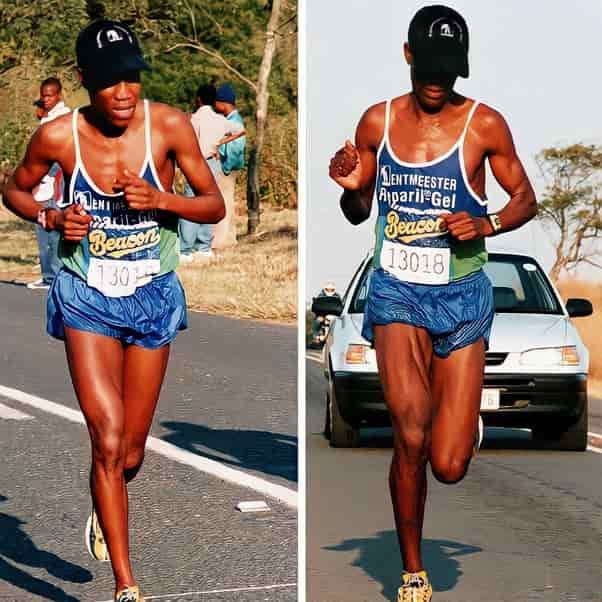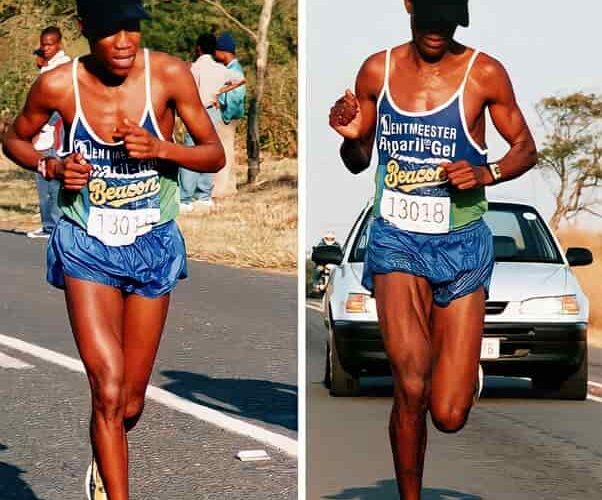Two Brothers, One Ultramarathon, and a Legendary Running Cheat

In the world of ultramarathons—extreme races that push human endurance to the limit—the Comrades Marathon stands out. This historic event has been held for over 90 years, making it one of the oldest and most prestigious ultramarathons. Every May, thousands of runners tackle its challenging 90-kilometer (56.1-mile) course along South Africa’s rugged terrain, stretching between the cities of Pietermaritzburg and Durban.
What makes the Comrades Marathon even more remarkable is its sheer scale. Each year, about 23,000 runners sign up to face this grueling challenge. While the race officially allows up to 12 hours to finish, elite athletes complete it in under six. Those who fail to meet the time limit are “swept up by the broom wagon,” a vehicle that picks up runners unable to continue. Many of these runners collapse from exhaustion, their bodies wracked with cramps as they desperately attempt to reach the finish line.
But why would anyone endure such punishment? For most participants, the answer is simple: the thrill of accomplishing something extraordinary and raising money for charity. Completing the Comrades Marathon is a badge of honor, a feat that earns lifelong bragging rights. However, for some, the race represents a chance to win much-needed cash.
The Stakes of the Comrades Marathon
The Comrades Marathon isn’t just about endurance—it also offers substantial prize money. Depending on age category and specific checkpoint times, participants can win up to $10,000 USD. This attracts not only dedicated athletes but also individuals willing to bend the rules for a shot at the prize. Over the years, cheating scandals have surfaced in the ultramarathon world, and the Comrades is no exception. While doping is a common issue in competitive sports, some runners have devised more creative methods of cheating.
The Story of Sergio and Fika Motsoeneng
One of the most infamous cheating scandals in the race’s history involved South African brothers Sergio and Fika Motsoeneng. Hailing from the impoverished village of QwaQwa in central South Africa, Sergio was a skilled long-distance runner. In 1999, he made his Comrades Marathon debut and finished in an impressive eighth place. In a televised interview after the race, Sergio announced he would donate his gold medal—awarded to the top 10 finishers—and his $1,000 prize to his father.
However, something about Sergio’s performance raised suspicions. Nick Bester, a seasoned ultramarathoner who finished 15th that year, noticed an inconsistency. He claimed Sergio had never passed him during the final stretch, a detail Bester found odd since he kept a meticulous count of runners ahead of him.
Initially, race officials dismissed Bester’s concerns after reviewing the time sheets. But the situation took a dramatic turn when a reporter from *The Beeld*, an Afrikaans newspaper, uncovered photographic evidence that didn’t add up. In photos taken during the race, Sergio appeared to have switched his watch from one wrist to the other and mysteriously developed a scar on his shin.
A Clever (but Illegal) Plan
The truth soon emerged: Sergio hadn’t run the entire race alone. Forty-five minutes into the marathon, he ducked into a portable toilet, where his identical twin brother, Fika, was waiting. Inside, the two brothers executed a seamless relay-style switch. Sergio handed over his race bib, hat, shirt, and even his shoes to Fika, who continued running in his place. The brothers repeated this swap multiple times over the 90-kilometer course, essentially turning the ultramarathon into a tag-team event.
When their deception came to light, race officials stripped Sergio of his prize money and banned both brothers from competing in ultramarathons for over five years. The Motsoeneng brothers later explained that their actions were driven by poverty. They saw the prize money as a way to improve their family’s dire financial situation.
A Lawyer’s Perspective
The brothers’ lawyer, Clem Harrington, who was also a Comrades Marathon participant, described the case as a “tragic story.” Harrington remarked, “Sergio is an incredibly talented runner. If he had focused the energy he spent on cheating into running the race properly, he might have finished in the top five.”
Harrington’s words proved prophetic. After serving his ban, Sergio returned to the Comrades Marathon in 2010. This time, he played by the rules and achieved an impressive third-place finish. However, his redemption was short-lived. Sergio later tested positive for a banned substance, tarnishing his comeback.
Lessons from a Cheating Scandal
The story of Sergio and Fika Motsoeneng is one of ambition, desperation, and the lengths to which some will go in pursuit of success. Their actions highlight the pressures faced by athletes from disadvantaged backgrounds, who often view sports as a way out of poverty. While their cheating brought them infamy, it also serves as a cautionary tale about the importance of integrity in competition.
Today, the Comrades Marathon continues to attract runners from all walks of life. The Motsoeneng brothers’ scandal is a reminder that while the race is a test of physical endurance, it is also a measure of character. For most participants, the real victory lies not in winning prize money but in crossing the finish line with pride.
FAQs About the Motsoeneng Brothers and the Comrades Marathon Scandal
1. What is the Comrades Marathon?
The Comrades Marathon is one of the world’s oldest and most famous ultramarathons. It is a 90-kilometer (56.1-mile) race held annually in South Africa, taking runners between Pietermaritzburg and Durban along a challenging route.
2. Why is the Comrades Marathon so popular?
The marathon is known for its rich history, grueling course, and sense of accomplishment for those who finish. Many participants run for charity, while others seek the prestige of completing one of the most challenging endurance races.
3. What happened with Sergio and Fika Motsoeneng?
In 1999, Sergio Motsoeneng finished eighth in the Comrades Marathon. However, it was later revealed that he and his identical twin brother, Fika, had cheated by swapping places during the race. They executed their switch in a portable toilet and repeated this relay-style tactic multiple times.
4. Why did the brothers cheat?
The Motsoeneng brothers cited poverty as their primary motivation. They hoped to win prize money to support their family and improve their living conditions in their rural South African village.
5. How were they caught?
The deception was uncovered after a journalist from *The Beeld* newspaper analyzed race photos. In one set of images, Sergio appeared to have switched his watch from one wrist to the other and suddenly developed a scar on his shin—clues that revealed the involvement of his twin brother.
6. What consequences did they face?
Sergio and Fika were stripped of their prize money and banned from competing in ultramarathons for over five years. Their actions also brought significant public scrutiny and criticism.
7. Did Sergio compete again after the ban?
Yes, Sergio returned to the Comrades Marathon in 2010 and finished in third place. However, his victory was overshadowed by controversy when he later tested positive for a banned substance.
8. What lesson does this story teach?
The Motsoeneng brothers’ story serves as a reminder of the importance of integrity in sports. It also highlights the struggles of athletes from disadvantaged backgrounds and the pressures they face in pursuing success.
9. Are there safeguards to prevent cheating in ultramarathons?
Yes, race organizers have implemented stricter measures, including checkpoints, photographic evidence, timing mats, and stricter oversight to ensure participants follow the rules.
10. What makes the Comrades Marathon unique?
Aside from its historical significance, the Comrades Marathon is unique because of its extreme distance, the camaraderie among runners, and the emotional finish line experience. Many view it as a personal challenge rather than a competitive race.

